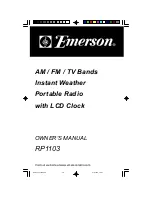
33
10 DIGITAL SELECTIVE CALLING (DSC)
10.1 GENERAL
WARNING
The
GX1400
series is designed to generate digital maritime distress
and safety calls to facilitate search and rescue. To be effective as a
safety device, this equipment must be used only within communica-
tion range of a shore-based VHF marine channel 70 distress and
safety watch system. The range of signal may vary, however under
normal conditions should be approximately 20 nautical miles.
Digital Selective Calling (DSC) is a semi-automated method of establishing a
radio call. It has been designated by the International Maritime Organization
(IMO) as an international standard for establishing VHF, MF, and HF radio
calls. It has also been designated as part of the Global Maritime Distress and
Safety System (GMDSS). It is planned that DSC will eventually replace aural
watches on distress frequencies and will be used to announce routine and
urgent maritime safety information broadcasts.
This system allows mariners to instantly send a distress call with its own position,
to the Coast Guard and other vessels within range of the transmission. DSC
will also allow mariners to initiate or receive Distress, Urgency, Safety, Routine,
Position Request, Position Report, and Group calls to or from another vessel
equipped with a DSC transceiver.
10.2 DISTRESS ALERT
The GX1400 series is capable of transmitting and receiving DSC distress
messages. Distress alert transmitted from the transceiver include the latitude
and longitude of the vessel when valid GPS position data is being received.
10.2.1 Transmitting a DSC Distress Alert
NOTE
To be able to transmit a DSC distress alert, the MMSI number must be
programmed, refer to section “
8.6.1 Maritime Mobile Service Identity
(MMSI)
”.
In order for the ships location to be transmitted, the
GX1400
series must
be able to receive a valid position data from the internal GPS receiver
or other GPS device connected by NMEA 0183. Refer to section “
8.5.2
Accessory Cables
”.
















































